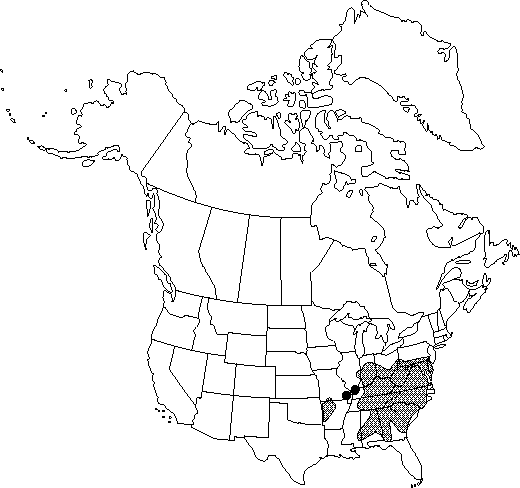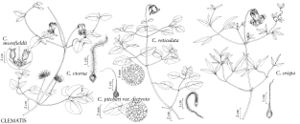Clematis viorna
Sp. Pl. 1: 543. 1753.
Stems viny, to 4 m, without cobwebby pubescence, nearly glabrous, or moderately pilose-pubescent proximal to nodes. Leaf-blade mostly 1-pinnate, some simple; leaflets usually 4-8 plus additional tendril-like terminal leaflet, lanceolate to ovate, unlobed or 2-3-lobed, or most proximal 3-foliolate, 2-12 × 1-5 (-6) cm, thin, not conspicuously reticulate; surfaces abaxially sparsely to densely pilose, not glaucous. Inflorescences axillary, 1-7-flowered; bracts well above base of peduncle/pedicel. Flowers broadly urn-shaped to bell-shaped; sepals pale lavender to reddish purple, grading to cream-yellow toward tip, ovatelanceolate, 1.5-3 cm, margins not expanded, very thick, not crispate, tomentose, tips acuminate, recurved, abaxially sparsely to densely pubescent. Achenes: bodies silky-pubescent; beak 2.5-6 cm, plumose. 2n = 16.
Phenology: Flowering spring–summer.
Habitat: Wooded cliffs and stream banks
Elevation: 0-1400 m
Distribution

Ala., Ark., Del., D.C., Ga., Ill., Ind., Ky., Md., Miss., Mo., N.C., Ohio, Pa., S.C., Tenn., Va., W.Va.
Discussion
Formerly Clematis viorna was locally naturalized near Guelph, Ontario; no recent reports are known. D.S. Correll and M.C. Johnston (1970) mention "a report of a specimen" from Texas; neither the specimen nor further details have been located.
The Fox Indians prepared a drink from the roots of Clematis viorna to use medicinally as a panacea (D. E. Moerman 1986).
Selected References
None.
Lower Taxa
"silky-pubescent" is not a number.No values specified."connivent" is not a number."thick" is not a number.
